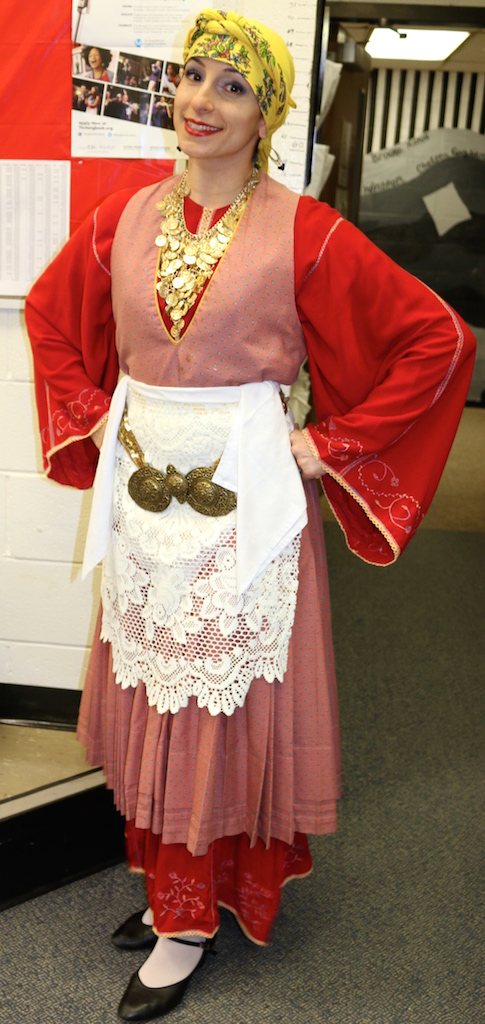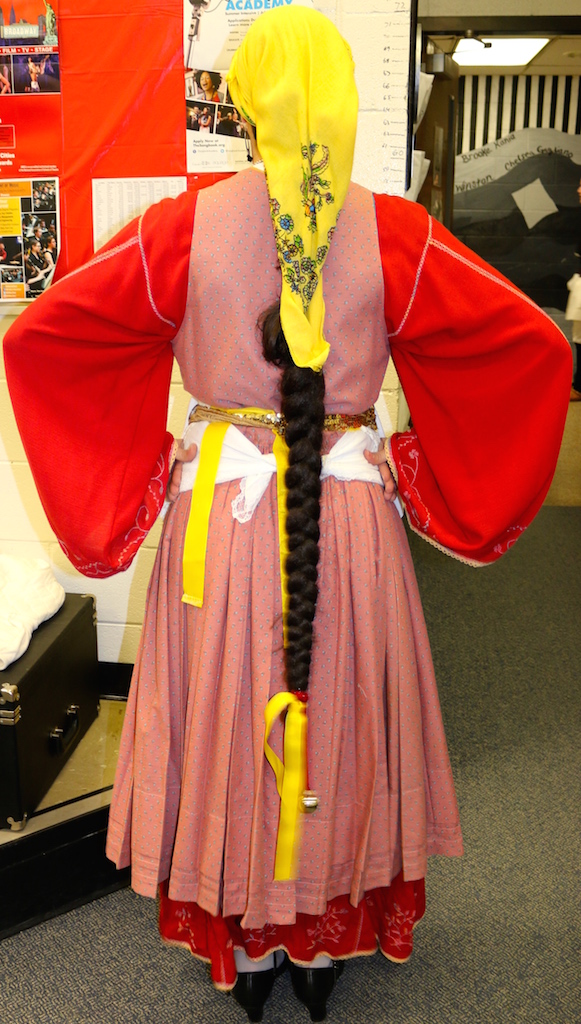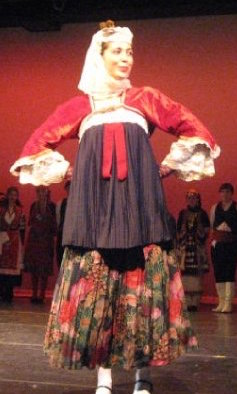
Thessaly
Thessaly consists of the most ancient region of Greece which was once referred to as Aeolia. Its capital is Larissa and several other major areas are Argithea, Elassona, Karditsa, the Sporades Islands, Trikala, and Volos.
Popular dances from Thessaly
Agie Mou Yiorgi Skyriane (Skyros), Argos (Argithea), Gaitanaki, Klistos (Argithea), Kamara (Skiathos), Karagouna (Karditsa), Koftos, Sousana (Karditsa), and Tai Tai (Karditsa)
Costumes from Thessaly
| This bridal and festival costume was worn by the peasants in the farmlands of Thessaly. One of its distinctive qualities is the embroidered heavy linen chemise from which hangs long black fringes. The costume also features an apron and embroidered long sleeves (the “kavadomanika”). Typically, several gold coins are worn on around the neck and on the head. Braids of human hair are typically added to the headdress (the “boubari”). |  |
 |
||
| The costume from Trikeri is also referred to as the golden costume (“chrysi foresia”) by the locals. This wedding costume consists of two white chemises and as many as thirteen underskirts. The outermost silk chemise is embroidered in gold. The pleated dress is usually short and frequently decorated at the hem. The waist is cinched with a gold-embroidered belt to which a white scarf is attached. The costume’s accessories (called the “simadia”) were a gift from the groom and denote his social status. |  |
 |
||
| This costume, which is called the “foustana” in the local dialect of Skopelos, is a typical example of Western influence on Greek attire. It consists of four underdresses topped by a sleeveless outer dress that has embroidery and pleats. The chemise is made from white silk with gold lace and embroidery. It has a short velvet bodice, the “baboukli”, which is fastened by a small gold bib. The intricate headdress was tied on the bride’s head by a specialist known as the “mandilistra”, from the word “mandili” meaning scarf. |  |
 |
||
